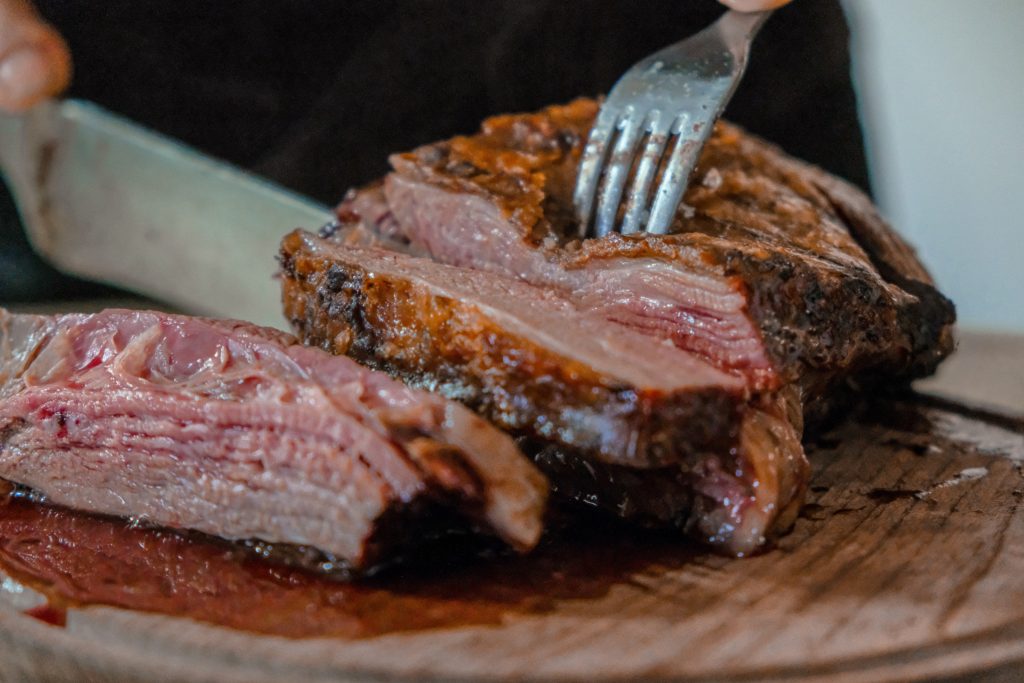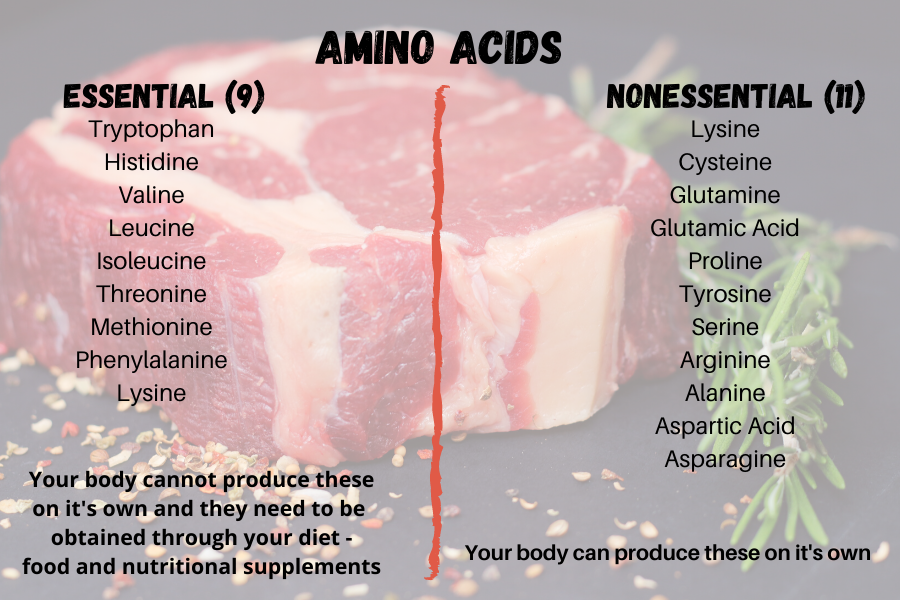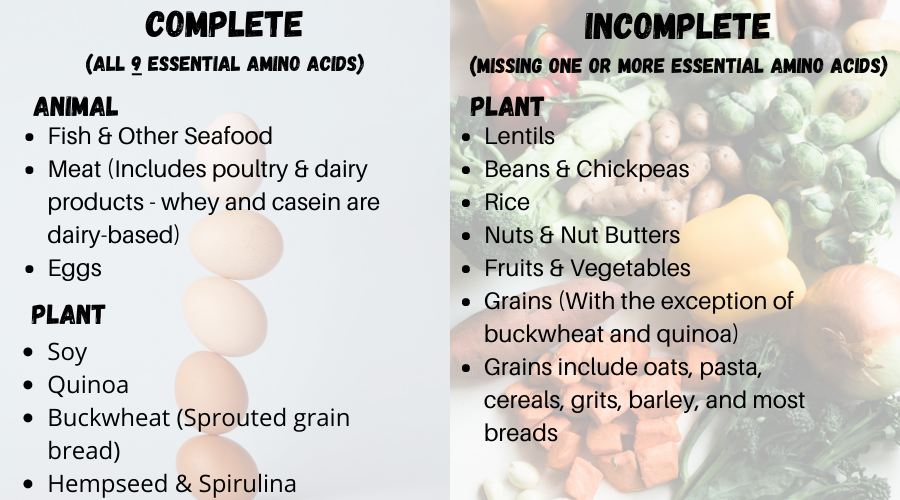Incomplete vs. Complete Protein: What’s The Difference?

Ever wondered what makes one food a complete protein, but another one incomplete?
If so, you’ve come to the right place.
Knowing the differences between the two main sources of protein can be helpful.
Varying your protein sources is important for getting in all of the essential amino acids and a wide variety of nutrients.
When you know which foods are complete proteins and which ones are not, you can cover all of your nutritional needs by eating the right foods and food combinations.
Before we get into the differences in proteins, let’s first take a look at why this macronutrient is so important for your overall health.
You might think it’s only necessary for those looking to pack on more muscle, but the roles and benefits of protein extend beyond building muscle.
Understanding Protein
Protein is an essential macronutrient that we all need in our diets for a variety of reasons.
You may know protein as the primary muscle-building nutrient, but it’s beneficial and incredibly important for everyone—not just athletes and those looking to bulk up.
Protein provides the structural components for muscles, skin, hair, nails, bones, cartilage, and blood. Your immune system relies on protein to form antibodies which help fight off viruses and bacterial infections.
Proteins function as hormones and enzymes—hormones are crucial for regulating many different body processes and enzymes are needed to fuel essential chemical reactions.
Protein helps transport oxygen throughout the body and helps heal wounds and injuries. It’s responsible for carrying out so many processes that are essential to life and your overall health.
It’s crucial for growth and development. It helps build muscle, increase strength, and aids in weight loss. It has a higher thermic effect of food compared to carbohydrates and fats.
This means it requires more energy to be digested, so you burn more calories by simply eating more protein. It’s also more filling, keeping you full for longer between meals.
As you can see, protein is absolutely necessary.
Without all the amino acids and enough protein…
» You lose strength.
» Muscles deteriorate.
» Bones become weak.
» Your appetite increases.
» You feel weak and fatigued
» Your immune system suffers.
» Increased fluid retention (edema).
» Recovery from wounds and injuries is slowed down.
» Negatively impacts the function of essential hormones.
» Abnormal mood changes due to lack of neurotransmitters that affect how your brain works.
More could be added to the list, but you get the idea. Nearly every cell in the body relies on protein in some way.
All Protein Is Created Equal, Right? Not Quite.

Some protein sources provide your body with all of the essential amino acids. Other protein sources—such as incomplete proteins—fall short of containing all of them.
Each food has a different amino acid profile and carries different nutrients. For this reason, it’s important to vary your protein sources. You want to get all 20 amino acids in sufficient amounts.
Amino acids are organic compounds that combine to form proteins. They are commonly referred to as “the building blocks” of protein.
Of the 20 amino acids, 9 are essential and 11 are nonessential.
Essential amino acids (9): These cannot be made by the body and need to be obtained through your diet.
Nonessential amino acids (11): These can be made by the body.
Cysteine, arginine, proline, glycine, tyrosine, and glutamine are considered conditionally essential. These amino acids are typically not essential, but during times of chronic stress or the presence of an illness, these must be obtained through your diet.
Are you expected to Google which foods have which amino acids, track the amino acid content of foods, and be overly meticulous about it No, not at all.
Make sure you’re varying your protein sources and eating a gram of protein per pound of body weight. Most people will easily be able to get all essential amino acids.
Varying protein sources is especially important for vegans and vegetarians since they are mainly consuming incomplete plant-based proteins.

Animal proteins are complete proteins and contain all 9 essential amino acids.
When you see protein referred to as “high-quality” it’s likely they’re referring to complete proteins.
Plant proteins are incomplete proteins and do not contain all 9 essential amino acids. There are some exceptions. Soy, hempseed, buckwheat, spirulina and quinoa are all plant proteins, but are considered complete since they do have all 9 essential amino acids.

Dairy: Some examples of dairy include cottage cheese, Greek yogurt, milk, cheese, whey, and casein.
Soy: Tempeh, soybeans, edamame, tofu are sources of soy that are complete proteins.
Buckwheat: Ezekiel bread is an example. Any other sprouted grain bread counts as well.
Don’t Miss Out On Protein
Besides the few complete proteins that are plant-based, you can also combine different incomplete plant-based proteins to meet your nutritional needs.
Different foods have different amino acid profiles. You can eat one protein source that is missing 2 essential amino acids, then eat another that has the remaining 2 amino acids that were missing.
You don’t have to get all of the essential amino aids with every single meal. It can be spread out throughout the day.
Here are some recommended incomplete protein food combinations to form a complete protein.
Struggling with your nutrition and need some guidance? Fill out the form below and I’ll get back to you as soon as I can!
